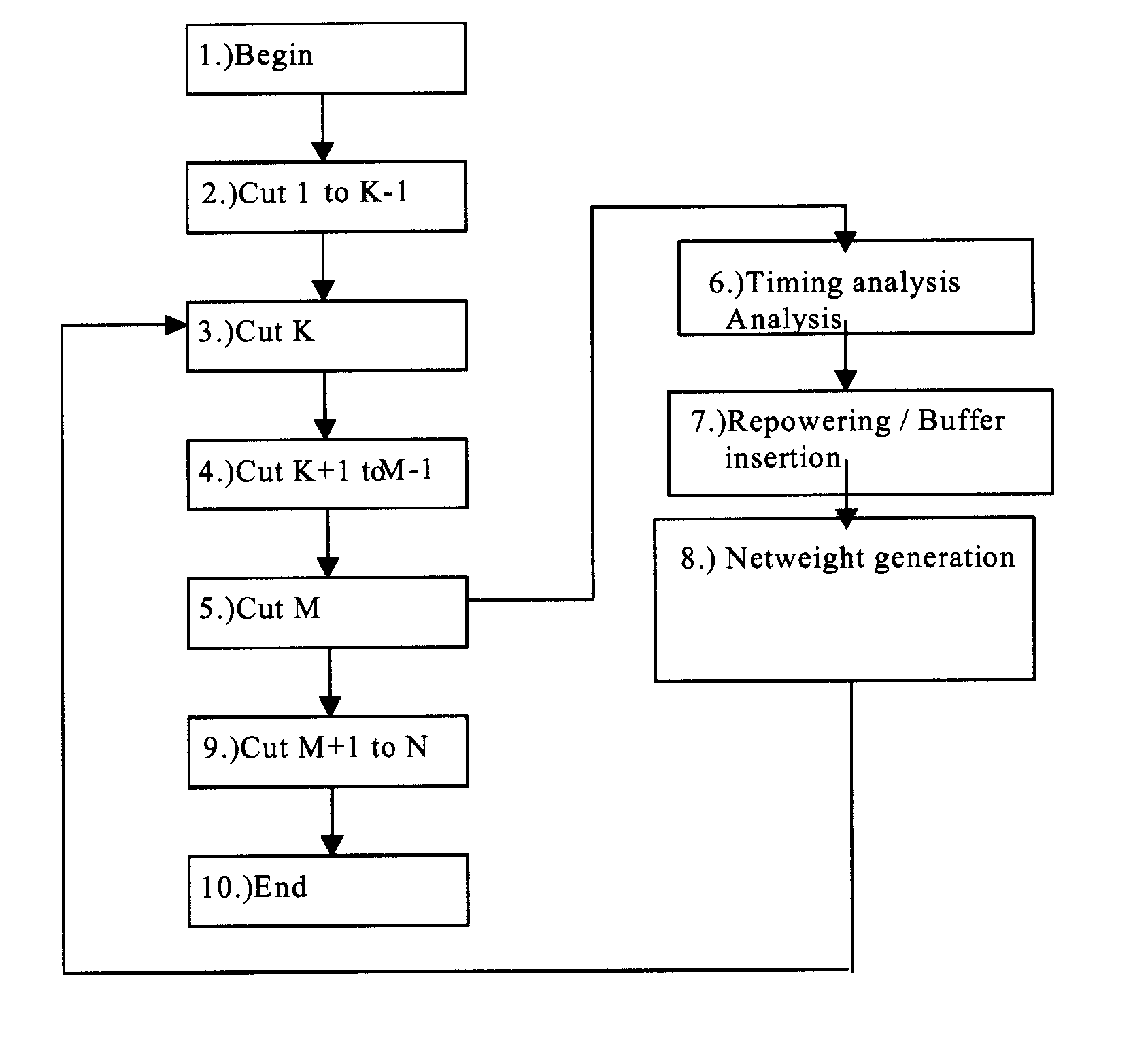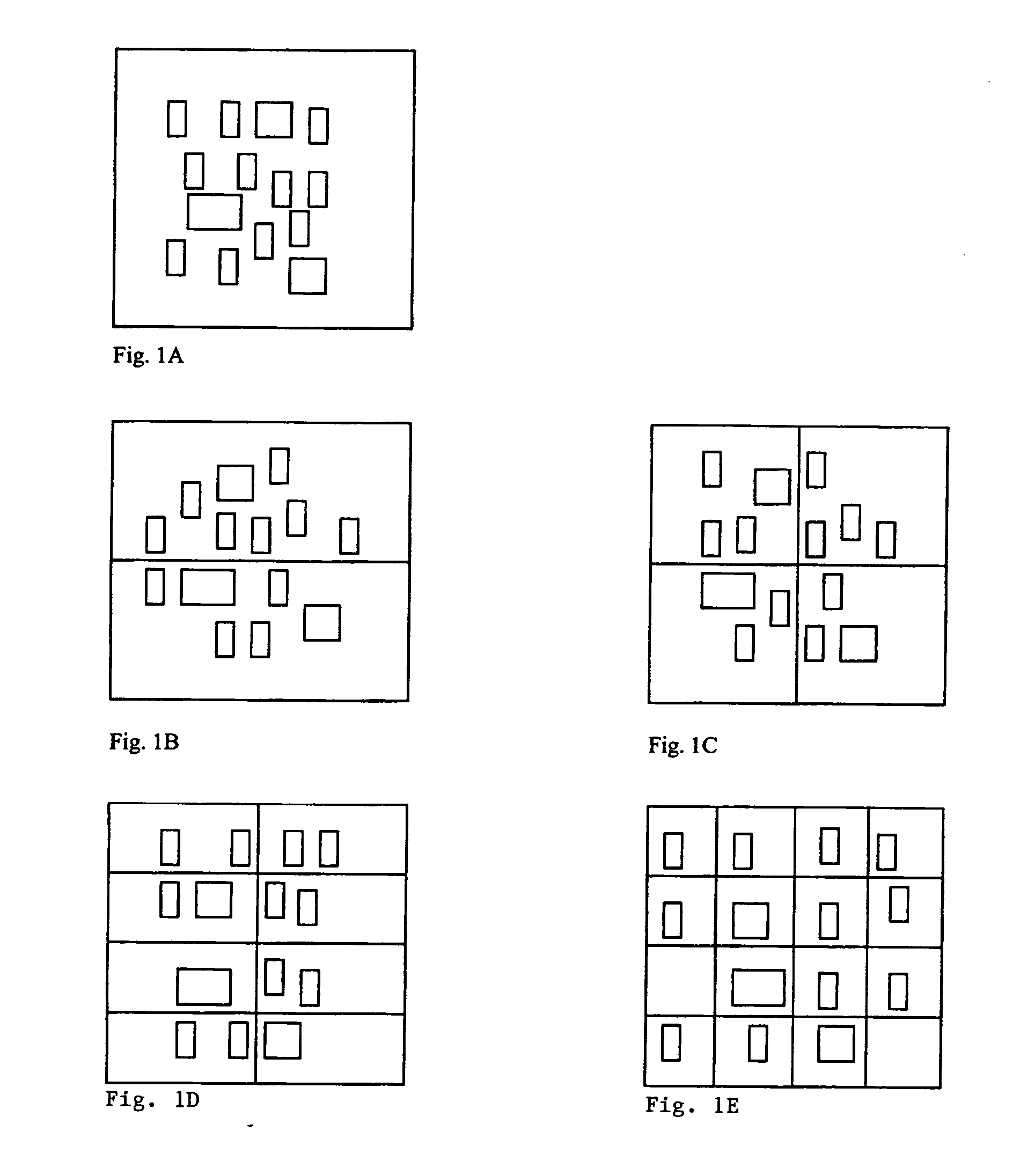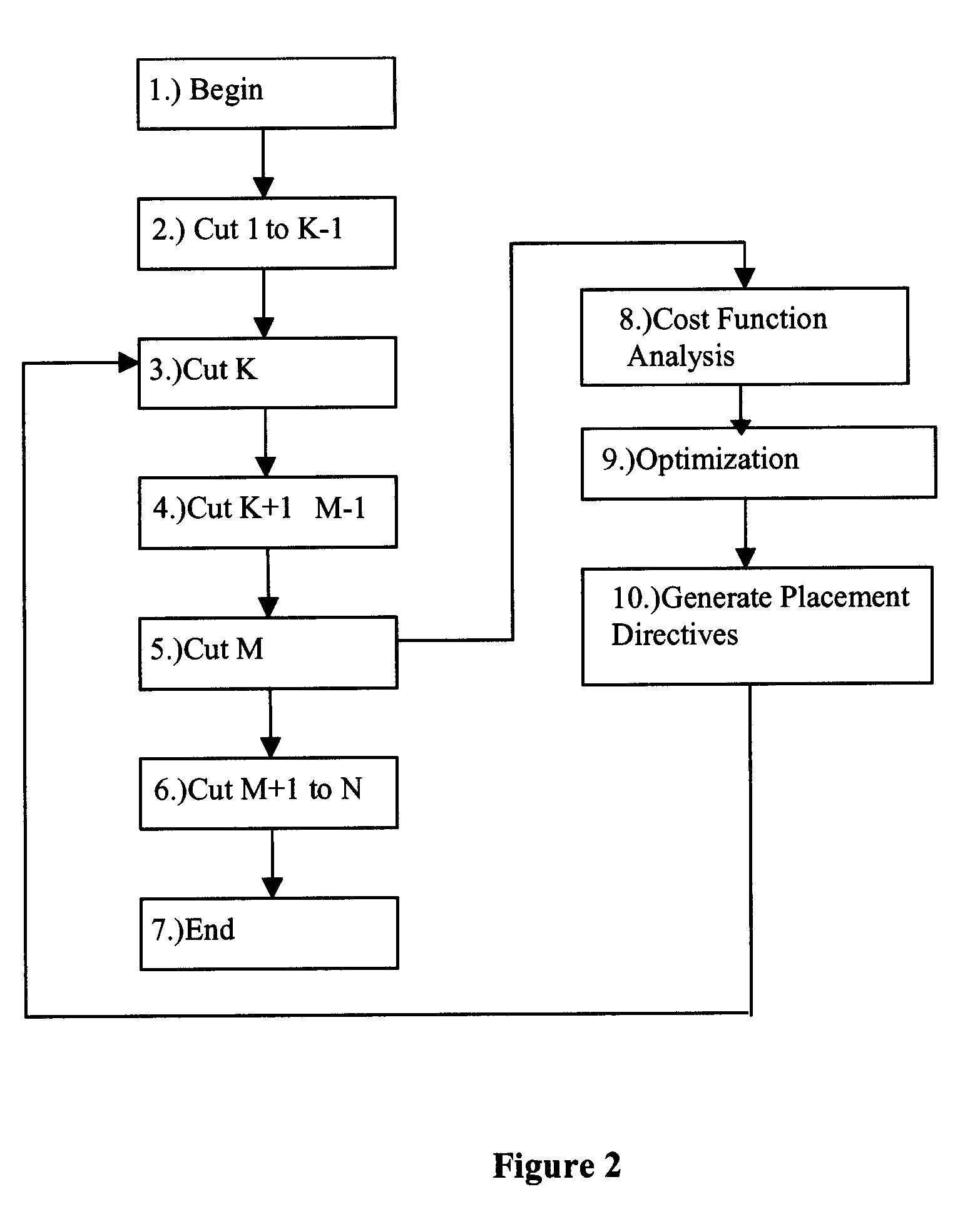Method for successive placement based refinement of a generalized cost function
a cost function and generalized technology, applied in the field of electronic design automation, can solve the problems of increasing the difficulty of simultaneous optimization of the cost function, increasing the difficulty of achieving optimal placement, and extra wire length, so as to improve the quality of the results achieved at the look ahead poin
- Summary
- Abstract
- Description
- Claims
- Application Information
AI Technical Summary
Benefits of technology
Problems solved by technology
Method used
Image
Examples
Embodiment Construction
[0054] Referring now to FIG. 2, there is shown a flowchart illustrating the method steps for performing the placement optimization relative to a given cost function, in accordance dance to the present invention.
[0055] The inventive method uses a successive partition placement flow iteratively. In step 2 of the iteration, the flow begins at cut 1 and ends at cut M (step 5). Cut M is determined by the algorithm to be a value such that M2 is evaluated using predefined cost metrics. Based on the evaluation of the cost metrics, directive inputs to placement are specified. This evaluation and directive generation step is shown in steps 8, 9, and 10.
[0056] Still referring to FIG. 2, steps 3-5 perform a placement from cut K (step 3) through M (step 5). When the iteration M>K>1 is reached, K is selected so that the starting point of the second iteration captures some global qualities of the initial placement. Likewise, M is computed in accordance with the desired level of placement approxi...
PUM
 Login to View More
Login to View More Abstract
Description
Claims
Application Information
 Login to View More
Login to View More - R&D
- Intellectual Property
- Life Sciences
- Materials
- Tech Scout
- Unparalleled Data Quality
- Higher Quality Content
- 60% Fewer Hallucinations
Browse by: Latest US Patents, China's latest patents, Technical Efficacy Thesaurus, Application Domain, Technology Topic, Popular Technical Reports.
© 2025 PatSnap. All rights reserved.Legal|Privacy policy|Modern Slavery Act Transparency Statement|Sitemap|About US| Contact US: help@patsnap.com



